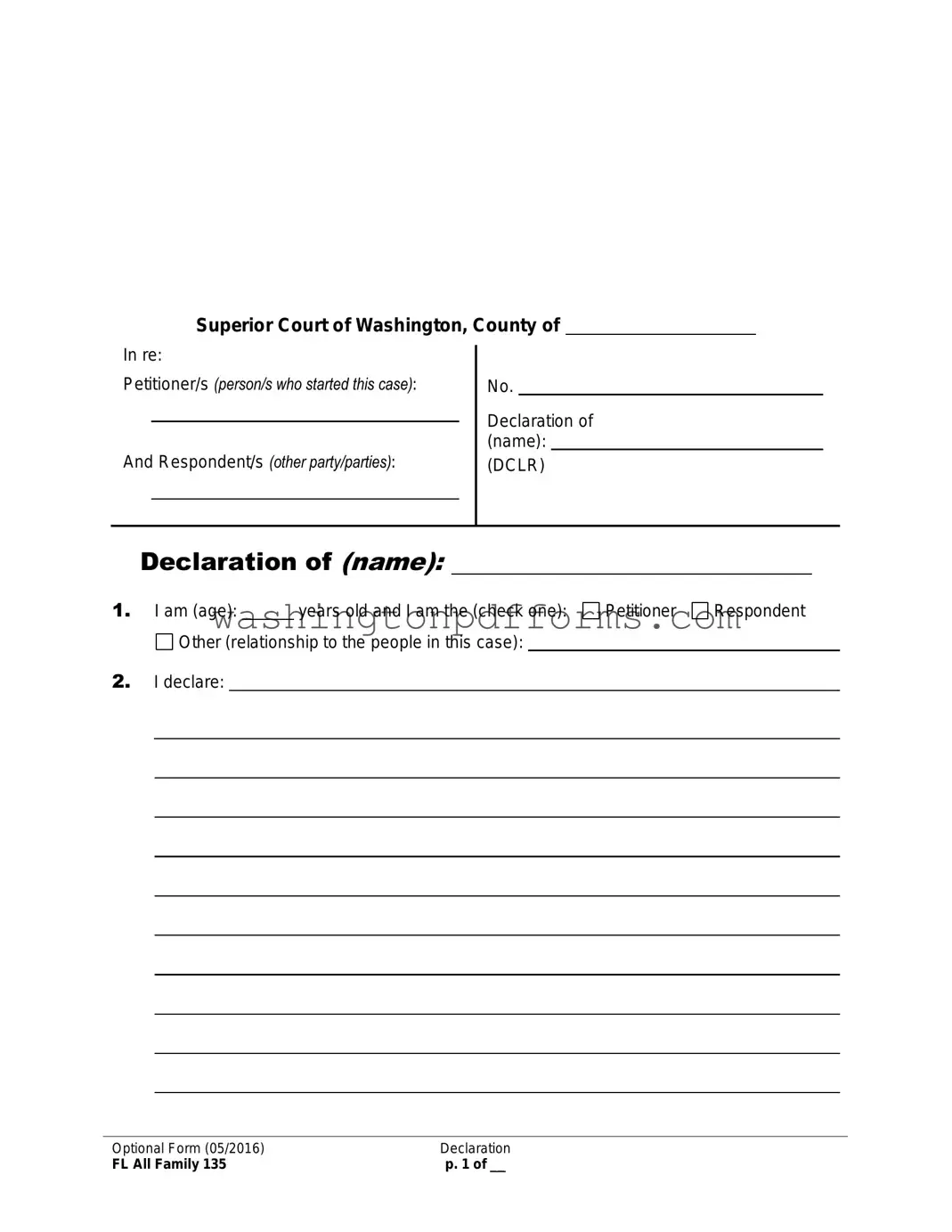Filling out the Washington State Declaration form can be a straightforward process, yet many individuals encounter common pitfalls that can complicate their case. Understanding these mistakes can help ensure that the form is completed accurately and effectively.
One frequent error occurs when individuals neglect to specify their role in the case. The form requires the filer to check a box indicating whether they are the Petitioner, Respondent, or another party. Failing to make this selection can lead to confusion about the individual's standing in the case, potentially delaying proceedings or complicating legal arguments.
Another common mistake involves the omission of critical personal information. The form asks for the age of the declarant, yet some individuals either leave this section blank or provide incomplete details. Accurate and complete information is vital, as it establishes the context of the declaration and supports the credibility of the statements made.
Additionally, many people overlook the importance of attaching necessary documents. The form mentions that the filer should indicate the number of pages attached. Neglecting to do so, or failing to attach relevant documents altogether, can result in the court lacking essential information to make informed decisions. This oversight can hinder the progress of the case and may require additional hearings or submissions.
Another mistake arises from misunderstanding the sealing process for sensitive documents. The declaration warns that certain financial or medical reports must be sealed to protect confidentiality. Individuals often fail to file these documents separately or neglect to use the required sealed cover sheet. This oversight can expose private information to public view, which may have serious repercussions for those involved.
Finally, many filers do not take the time to carefully read and verify their statements before signing the declaration. The form includes a declaration under penalty of perjury, emphasizing the importance of truthfulness. Errors or misstatements, whether intentional or accidental, can lead to legal consequences, including the dismissal of the case or even criminal charges for perjury.
